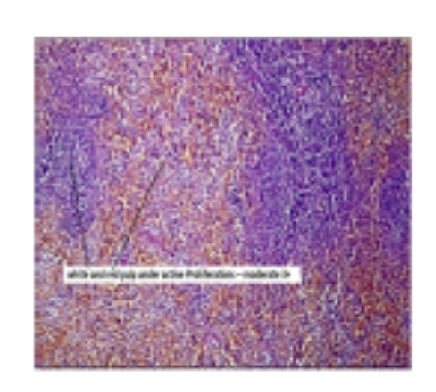


Indian Journal of Science and Technology
DOI: 10.17485/IJST/v16i47.2989
Year: 2023, Volume: 16, Issue: 47, Pages: 4594-4604
Original Article
Lalhriatpuii1, Y Jyothi1*, Deepsika Chhetri1, Syed Sohaila1, G Rachana1
1Department of Pharmacology, Krupanidhi College of Pharmacy, Bangalore, 560 035, Karnataka, India
*Corresponding Author
Email: [email protected]
Received Date:24 November 2023, Accepted Date:23 December 2023, Published Date:30 December 2023
Objectives: To investigate the anti-anaemic activity of Crotalaria juncea seed powder suspension against phenylhydrazine induced haemolytic anaemia in rats. Methods: The seeds of Crotalaria juncea was subjected to preliminary phytochemical analysis. Anemia was induced by administering phenylhydrazine (40 mg/kg, i.p.) for 2 consecutive days. Antianemic activity of Crotalaria juncea was investigated at the dose of 200 mg/kg and 400 mg/kg, once daily for 21 days by estimating blood parameters and pathological changes in kidney, liver, heart, spleen, and heart. Findings: Crotalaria juncea was showed the presence of alkaloids, carbohydrates, tannins, flavonoids, and phenolic compounds. Iron content was found to be 5 mg/100 ml in Crotalaria juncea. Anemia induction by phenylhydrazine injections to rats caused significant decrease in red blood cells, hemoglobin, and packed cell volume. These decreased levels of RBCs, hemoglobin and PCV in blood was significantly improved by the treatment with Crotalaria juncea (p<0.05). A significant normalized clotting time equivalent to normal control groups was observed in group treated with C. juncea. Furthermore, Crotalaria juncea restored pathological changes in kidney, liver, and heart tissues near to normal. Novelty: The C. juncea can be used as anti-anemic treatment with fewer side effects.
Keywords: Anaemia, Crotalaria juncea, Phenylhydrazine, Haemoglobin, Anti-anaemic activity
© 2023 Lalhriatpuii et al. This is an open-access article distributed under the terms of the Creative Commons Attribution License, which permits unrestricted use, distribution, and reproduction in any medium, provided the original author and source are credited. Published By Indian Society for Education and Environment (iSee)
Subscribe now for latest articles and news.